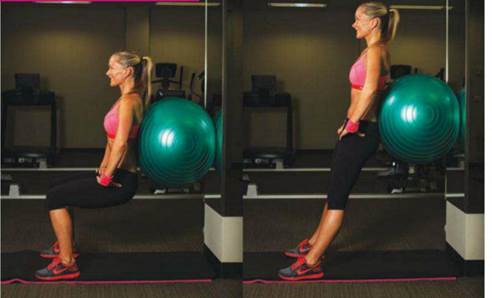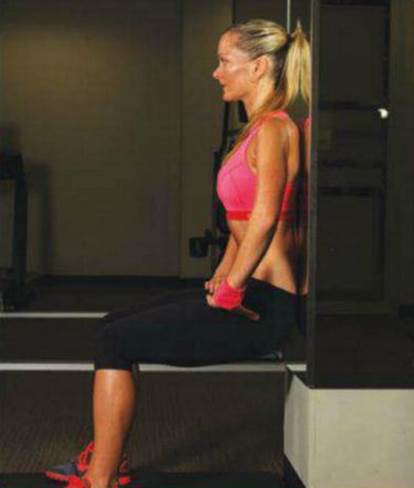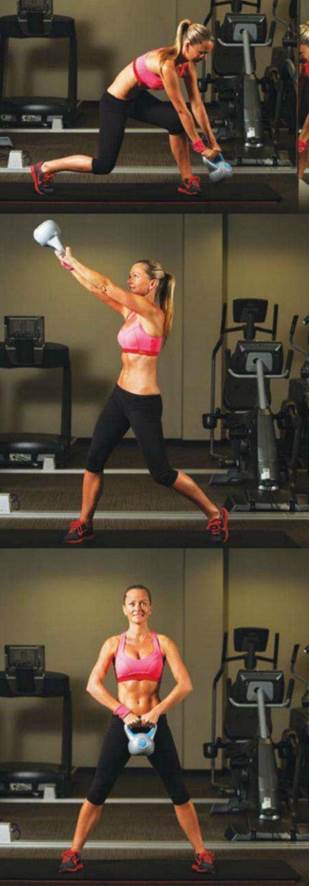Isotonic exercises cause contraction and
elongation of a particular muscle or muscle group throughout the movement.
Examples are lunges, squats, and pushups.
Isometric exercises are static, held
exercises. This means there is no joint movement and muscles are in
contraction.
Examples are static wall squats and the
plank.
Alternating between isotonic and isometric
exercises is a unique style of workout that will get your lower body cover
model ready, says WH&F model trainer Lila H.
Firstly, muscles are exerted through phases
of contraction and lengthening for a specified number of repetitions (isotonic
exercise). This is followed by a static muscle contraction for a set period, or
until failure (isometric exercise).
Not only can this style of training make
workouts more challenging, but it also allows for maximum exertion of a muscle
group during a session, promoting excellent results in both strength and performance.
Target muscles: quads, hamstrings, Glutes
A. Swiss ball wall squat
·
Start with body leaning up against ball on wall
with ball at waist level
·
Drop down into a squat, no lower than a
90-degree angle in the knee
·
Return back to start position
Ensure core is engaged and pelvis tucked
under 10 reps/3 sets

Ensure
core is engaged and pelvis tucked under 10 reps/3 sets
B. Static wall squat
·
Begin by standing upright against wall
·
Slowly ease down into a squat position, no lower
than a 90-degree angle in the knee
·
Ensure core is engaged and pelvis tucked under
·
Hold for 1 minute
Repeat the above exercises back-to-back for
2-3 sets

For
this exercise, feet and knees must be rotated in the direction of the movement
Target muscles: Glutes, quads, hamstrings, core &
upper arm)
C. Side lunge with shoulder extension
·
Ease down into a side lunge, rotating the body
and feet in the direction of the lunge
·
Ensure the lunging knee is rotated over the toes
·
Lower the weight towards the foot, bending
through the knees
·
Lift the weight, rotate the body and feet in the
alternate direction
·
Extend weight up and out
·
24 reps/1 set repeat to other side
To prevent injury, before tackling kettle bell
work, ensure you learn correct technique from a qualified trainer. For this
exercise, feet and knees must be rotated in the direction of the movement

Side
lunge with shoulder extension
D. Static lunge
·
Ease down into a lunge position
·
Ensure the distance between feet is long enough
to avoid the knee pushing out further than the toe
·
Ensure the lunging knee is tracking directly
ahead and not rotating in or outwards
·
The core must be engaged and pelvis upright
(tucked under) to avoid pressure on the lower back
·
Hold for 1 minute and repeat with alternate leg

Static
lunge
Repeat the above exercises
Target muscles: hamstrings, Glutes, quads, (core)
E. Thera-band leg extension
·
Place Thera-Band handle around ball of foot
·
Bend slightly in the supporting leg for
stability
·
Extend working leg back directly behind the body
·
Return to start position
·
Ensure core is engaged and pelvis tucked under
to avoid pressure on the lower back and to assist with stability
·
24 reps/repeat with alternate leg Continued
F. Static single-leg squat
·
Lift one foot slightly off the ground
·
Lower down into a squat position with the
supporting leg
·
Ensure the supporting knee is tracking directly
forward and not rotating in or outward
·
Hold for 30 seconds to 1 minute/repeat with
alternate leg
Repeat the above exercises back-to-back for
2 sets